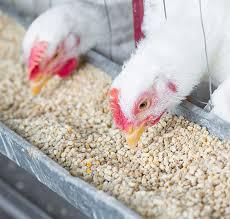Poultry Feed Market Overview: Industry Growth, Challenges, and Future Outlook

The poultry feed market has become a cornerstone of the global food supply chain, enabling the steady production of poultry meat and eggs to meet rising consumer demand. As poultry remains one of the most affordable and accessible sources of protein worldwide, the importance of efficient, nutritionally balanced feed has never been greater. This article offers a comprehensive overview of the poultry feed market, including its current landscape, driving forces, key challenges, and future growth prospects.
Global Market Snapshot
The poultry feed market has witnessed consistent growth over the past several years, propelled by increasing global poultry production. Poultry products, including broiler meat and eggs, have become dietary staples in many regions due to their affordability, high nutritional value, and lower environmental impact compared to red meat.
As the global population continues to expand and urbanization accelerates, particularly in developing economies, the demand for poultry-based protein is expected to rise steadily. Poultry feed plays a crucial role in ensuring the health, growth, and productivity of poultry birds, making it a critical component in meeting this rising demand.
Feed typically accounts for the largest share of poultry production costs, making it essential for farmers to use efficient, high-quality formulations that promote optimal feed conversion ratios (FCR) and overall bird performance.
Major Market Drivers
Rising Poultry Consumption Globally
The increasing consumption of poultry products is the primary driver of the poultry feed market. Poultry meat is widely preferred over red meat due to its lower fat content, faster production cycles, and competitive pricing. Eggs are also gaining popularity as an affordable, protein-rich food source.
Emerging economies, particularly in Asia-Pacific, Latin America, and the Middle East, are witnessing significant growth in poultry consumption due to improving living standards and changing dietary habits. This demand surge necessitates the production of large volumes of poultry feed to support expanding poultry farms.
Technological Advancements in Feed Production
The poultry feed industry is benefiting from continuous innovation in feed formulations and production processes. Modern feed solutions incorporate enzymes, amino acids, probiotics, prebiotics, organic acids, and phytogenic additives to enhance bird health and growth while minimizing feed waste.
Precision nutrition, customized feed for different poultry species, and stage-specific diets are increasingly being adopted to optimize efficiency and production outcomes. Furthermore, the integration of digital technologies and smart feeding systems is enabling real-time monitoring and feed management, helping farmers achieve improved productivity and profitability.
Shift Towards Antibiotic-Free and Sustainable Feed Solutions
Consumer awareness of food safety, animal welfare, and environmental sustainability is reshaping the poultry feed market. There is a growing demand for antibiotic-free and organic poultry feed options, particularly in North America and Europe, where regulations regarding antibiotic use are becoming stricter.
Producers are turning to natural alternatives such as essential oils, probiotics, and plant-based additives to promote poultry health without relying on antibiotics. Additionally, the industry is exploring sustainable protein sources, including insect meal, algae, and single-cell proteins, to reduce the ecological footprint associated with traditional feed ingredients like soybean meal and fishmeal.
Regional Market Insights
Asia-Pacific
Asia-Pacific dominates the global poultry feed market, driven by strong poultry production in China, India, Indonesia, and Vietnam. Rising population, increasing per capita income, and growing demand for affordable animal protein are fueling market growth in the region.
North America
North America is a mature poultry feed market, characterized by a high demand for antibiotic-free, organic, and specialty feed products. The region is also a leader in adopting advanced feed technologies and sustainable production practices.
Europe
Europe’s poultry feed market is shaped by stringent animal welfare regulations, sustainability initiatives, and consumer preference for premium, health-oriented poultry products. Functional feed additives and environmentally friendly formulations are gaining traction across European countries.
Latin America and Middle East & Africa
These regions are emerging as significant growth markets due to expanding poultry farming operations and increasing poultry consumption. Government support for livestock development and rising awareness of balanced poultry nutrition are driving feed market expansion.
Key Industry Challenges
-
Raw Material Price Volatility: Fluctuations in the prices of corn, soybean, and other key feed ingredients pose a challenge for feed manufacturers and poultry producers.
-
Disease Outbreaks: Avian diseases, such as bird flu, can disrupt poultry production and impact feed demand.
-
Regulatory Pressure: Compliance with evolving feed safety standards and sustainability requirements can increase production complexity and costs.
Future Market Outlook
The poultry feed market is expected to continue its upward trajectory, supported by rising global poultry production, ongoing innovation in feed formulations, and increased focus on sustainable and health-promoting products. Feed manufacturers are likely to invest further in alternative protein sources, precision feeding technologies, and environmentally responsible production practices.
As consumer preferences evolve and regulatory landscapes tighten, the market will place greater emphasis on developing high-quality, efficient, and safe feed solutions that meet the demands of modern poultry farming.
In conclusion, the poultry feed market remains a dynamic and essential part of the global food industry, poised to grow steadily in the coming years while contributing to food security, animal welfare, and environmental sustainability.
- Art
- Causes
- Crafts
- Dance
- Drinks
- Film
- Fitness
- Food
- Games
- Gardening
- Health
- Home
- Literature
- Music
- Networking
- Other
- Party
- Religion
- Shopping
- Sports
- Theater
- Wellness


